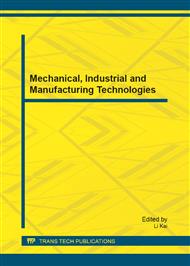p.68
p.74
p.80
p.87
p.95
p.103
p.109
p.115
p.122
Study on the Temperature Filed of Wet Dual Clutch Transmission during Starting Process
Abstract:
Based on the analysis of starting process of wet dual clutch transmission, dynamic rules for piston pressure and relative angular velocity of wet clutch were determined, According to the unsteady heat exchanging theory and the heat exchanging process of clutch engagement, a two dimensional heat conduction model of wet clutch was developed with reasonable initial conditions and boundary conditions. Matlab/PDE toolbox was used to solve the established model. The temperature distribution of friction pairs along the axial and radial direction were revealed in the Simulation results. Testing program had been designed, and real vehicle test was done to the temperature field on friction interface of wet dual clutch transmission in starting process. The test result indicated that the temperature field model and its solution were reliability, and it was instructive to optimize the design of wet clutch and its engaging control in starting process.
Info:
Periodical:
Pages:
95-102
Citation:
Online since:
June 2012
Authors:
Price:
Сopyright:
© 2012 Trans Tech Publications Ltd. All Rights Reserved
Share:
Citation:


